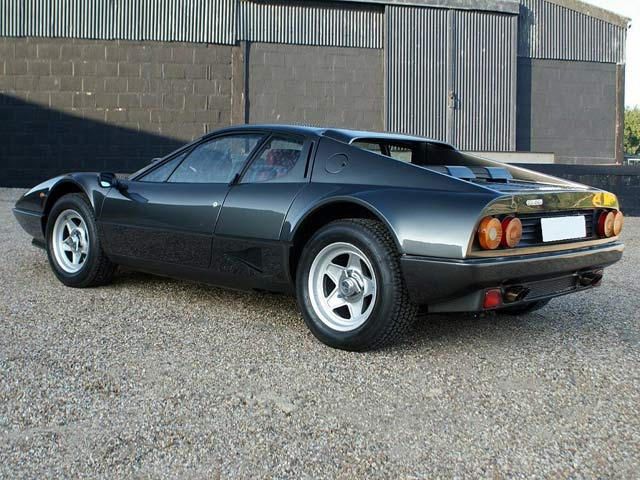The fuel-injected model was designated BB512i, and even though it was only built until 1984, it was the best-selling version of the Berlinetta Boxer. Fuel injection has also greatly helped emissions, which had always been the reason why no BB's had been sold in the US. Despite having solved this problem, not even the BB 512i officially made it across the pond, although a number of all versions of the BB were converted by third parties and sold in the US anyway.
As cool as the BB was though, it had some problems. For example, the front-mounted radiator and mid-mounted engine meant that coolant had to be plumbed in such a way that it caused the cabin to become unbearably hot. To address these issues, in 1984 Ferrari put an improved version of the engine from the BB 512i into the only road car to have ever been properly designed to make full use of a flat-12 power plant, the Pininfarina-designed Testarossa. The name means "red head", officially chosen for the red cam covers, but Ferrari was well aware of the fact that people would make other associations with the name.
For those who've never had the memorable experience of driving this car, it can seem a bit silly. The Testarossa embodied the excess of the 80's like no other car, thanks in no small part to a prominent role in Miami Vice. Then there was the issue of the boxy looks and the absurd cheese grater side strakes. These are valid criticisms, but they don't even come close to outweighing the positive aspects of the Testarossa. The 4.9-liter engine got a new set of four-valve heads, and power was increased to 390hp. It could hit 62mph in 5.3 seconds and a top speed of 180mph.
These were impressive numbers for 1984. Impressive to the point where, were it not for a small number of homologated 288 GTO's, it would have been the fastest production car in the world; at least until 1986 when the Porsche 959 would have smashed that record. The Testarossa was improved with the 1991 512 TR, when the engine was extensively reworked. Displacement remained the same but power was now up to 428hp. It received one last update in 1994, becoming the F512 M, but this was only produced for two years, as Ferrari was in need of something a bit more 90's.
With the replacement for the Testarossa, the 550, Ferrari went back to a front-engine V12, like the old Daytona. Although it is not inconceivable that another flat-12 road car might someday be produced, it does not seem likely to happen anytime soon. This really is a shame, although the flat-12 configuration never produced the kinds of advantages in low centers of gravity or increased engine smoothness that had been hoped for, they had a sound like no other engine type ever put into a car. If for no other reason than this incredible sound, I can't help but feel a bit sad that Ferrari never gave the flat-12 another try.

